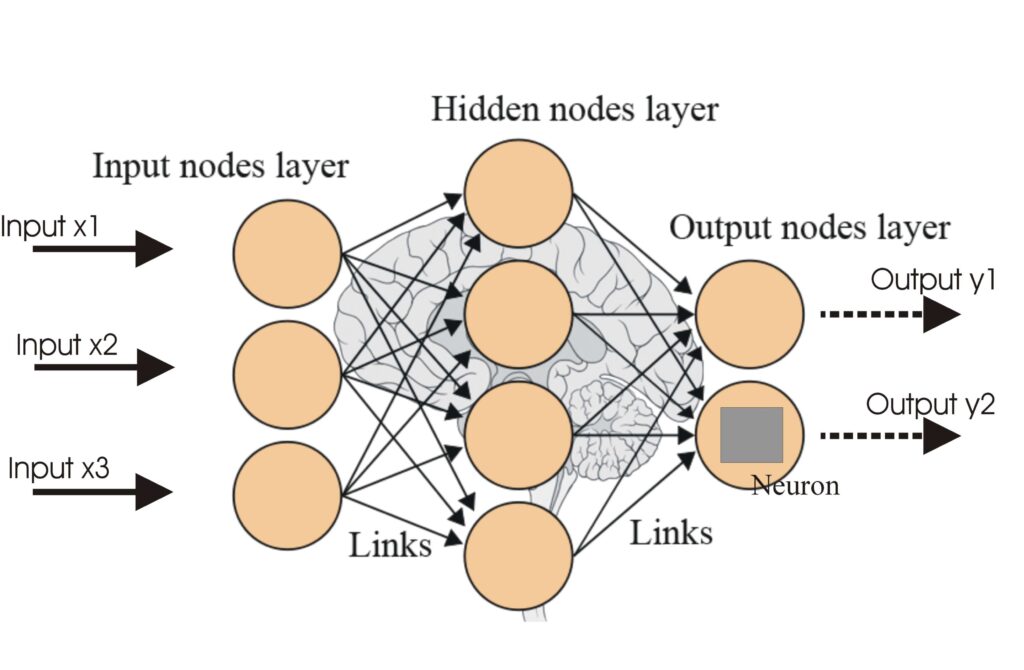
Neural Networks
A neural network, or artificial neural network (ANN), is a computational model inspired by the human brain, essential in AI and machine learning for tasks like ...
Artificial Neural Networks (ANNs) are computational models inspired by the human brain, enabling machines to learn from data and solve complex tasks in fields like vision, speech, and language.
Neural Networks are a subset of machine learning algorithms modeled after the human brain. These computational models consist of interconnected nodes or “neurons” that work together to solve complex problems. Neural Networks are widely used in various domains, including image and speech recognition, natural language processing (NLP), and predictive analytics.
Artificial Neural Networks (ANNs) are a specific type of neural network that mimic the functioning of biological neural networks in the human brain. ANNs are composed of layers of nodes, each representing an artificial neuron. These layers include:
ANNs are capable of learning from data, making them powerful tools in AI and ML.
Artificial Neural Networks can be visualized as weighted directed graphs organized in layers. Each node (neuron) in a layer is connected to nodes in the subsequent layer with a certain weight. These weights are adjusted through a process called training, where the network learns to minimize the error in its predictions.
Each node in an ANN applies an activation function to its input to produce an output. Common activation functions include:
The training of an ANN involves feeding it labeled data and adjusting the weights using optimization algorithms like Gradient Descent. This process is iterative and continues until the model achieves a satisfactory level of accuracy.
The simplest type of ANN where connections between nodes do not form cycles. Information moves in one direction—from input to output.
Specialized for processing structured grid data like images. CNNs are widely used in image recognition and computer vision tasks.
Designed for sequential data, such as time series or text. RNNs have loops that allow information to persist, making them suitable for tasks like language modeling and speech recognition.
The most basic form of ANN, used for binary classification tasks. It consists of a single layer of neurons.
The concept of neural networks has a rich history dating back to the 1940s. Key milestones include:
Artificial Neural Networks have a wide range of applications across various industries:
Neural Networks refer to a broad category of machine learning algorithms inspired by the human brain, while Artificial Neural Networks (ANNs) specifically refer to computational models designed to mimic the brain’s neural networks.
ANNs are trained using labeled data and optimization techniques like Gradient Descent. The training process involves adjusting the weights of the network to minimize prediction errors.
Common activation functions include the Sigmoid, ReLU (Rectified Linear Unit), and Tanh (Hyperbolic Tangent) functions.
Yes, specialized types of ANNs like Convolutional Neural Networks (CNNs) and Recurrent Neural Networks (RNNs) are designed to handle unstructured data such as images, text, and speech.
Start building your own AI solutions with FlowHunt. Explore how ANNs can power smart chatbots, automation, and more.
A neural network, or artificial neural network (ANN), is a computational model inspired by the human brain, essential in AI and machine learning for tasks like ...
Deep Learning is a subset of machine learning in artificial intelligence (AI) that mimics the workings of the human brain in processing data and creating patter...
Recurrent Neural Networks (RNNs) are a sophisticated class of artificial neural networks designed to process sequential data by utilizing memory of previous inp...
